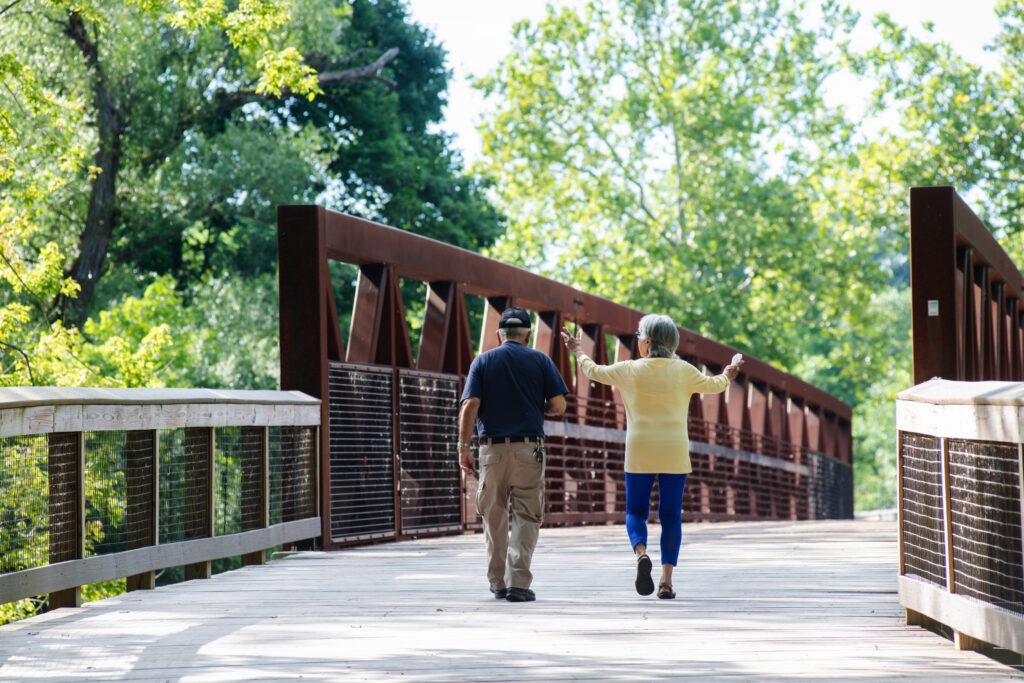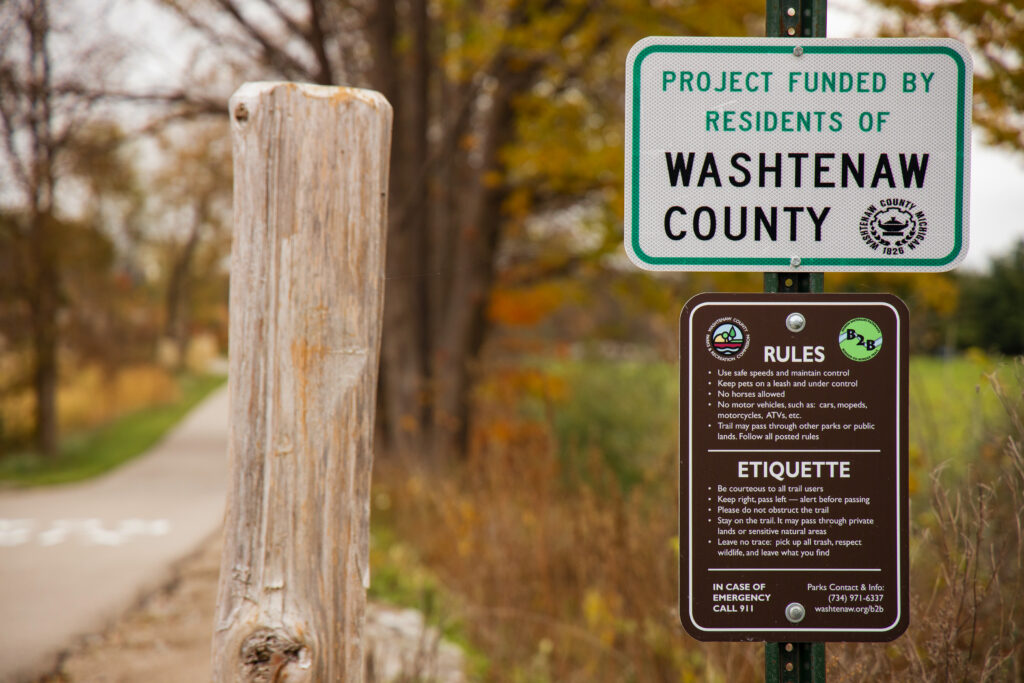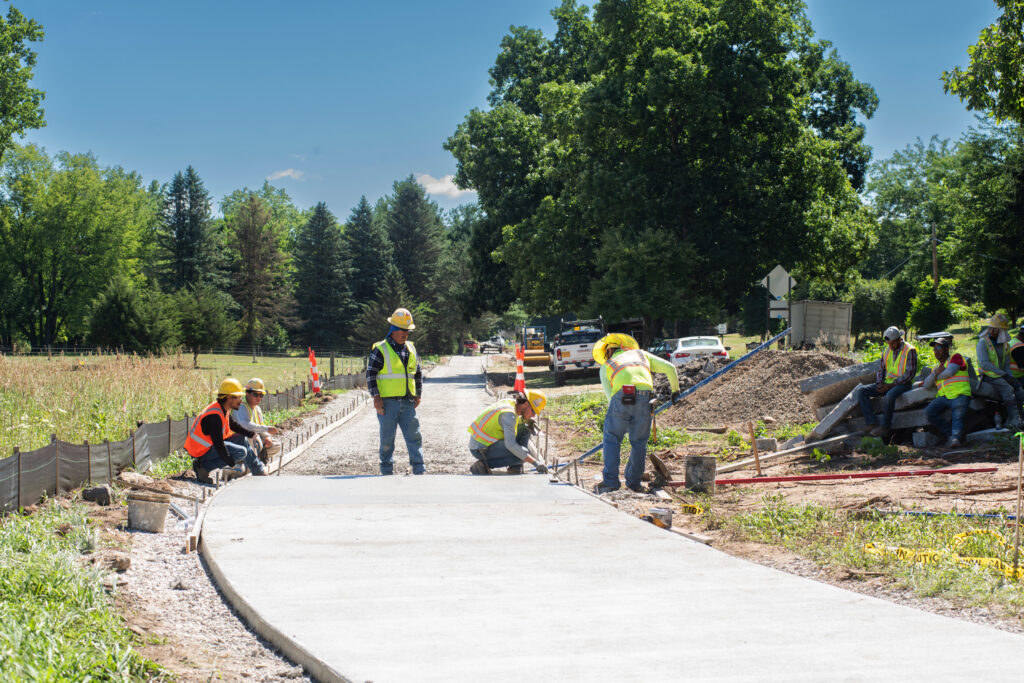The B2B Trail – Concept to Completion Series

Two of the most common questions that we receive are: “How is the trail being built?” and “When is the trail (or specific trail segment) going to be finished?” As loyal supporters and users of the B2B Trail, we want to take you on a behind-the-scenes journey of what is involved in taking a trail from concept to completion.

In our upcoming newsletters, we will be running a series of articles covering the major steps necessary to bring a trail into reality – including a deep-dive into trail planning, funding, engineering, and ultimately construction.
A major theme that you will see throughout this series is that non-motorized trail development is all about partnership. Indeed, even these articles will be written by a collaboration of the Huron Waterloo Pathways Initiative (HWPI) – the main private funding entity and information hub of the B2B Trail – and the Washtenaw County Parks and Recreation Commission (WCPARC) team – the primary design and construction agency behind the B2B Trail – to bring you a comprehensive perspective on all aspects of the work.
Partnership is critical for a host of reasons, most fundamentally because no single entity owns all of the land needed to build the trail, requiring close collaboration amongst project partners from the outset of any project. Even once built, no one agency or organization owns all of the completed trail. WCPARC owns more of the B2B Trail than any other public entity, but ownership constantly switches as the trail travels through parks, cities, townships, campuses, and Rights of Way throughout Washtenaw County.

As one recent example – the multi-year effort to connect all three Huron-Clinton Metroparks in Washtenaw County – Delhi, Dexter Huron, and Hudson Mills – involved six landowners and three maintenance entities. Fortunately, most project partners are willing to work together, sometimes outside of their primary focus, because they see the value that the trail brings to our community.

When it comes to trail funding, the primary public-private partnership exists between HWPI and WCPARC. Prior to HWPI’s creation, WCPARC was the primary funder of the B2B Trail, relying on highly competitive public grant opportunities to supplement local millage dollars that allowed them to complete an average of one mile of new trail per year. Since HWPI and WCPARC formally teamed up in 2017, more than $12 million of private funding has been raised to support the B2B Trail, while nearly doubling the overall scope of the planned B2B Trail distance and increasing the average construction rate to over three miles per year.
Private dollars raised by HWPI have come in a mix of foundation grants and individual donors, including an incredible $4.32 million in grant funding from The Ralph C. Wilson, Jr. Foundation and millions of dollars of private funding from over 2,600 individuals like you.
How is such a rapid increase in the rate of construction possible? Private funding can be strategically used to fill funding gaps and advance projects outside of long-range grant funding cycles and often accounts for one third of a project’s budget. When combined with traditional public funding sources, private dollars allow for much faster trail development than one of those funding sources on its own, making the HWPI and WCPARC partnership one of the most important to finishing the B2B Trail in the near future.

Through our upcoming series of articles, we hope to show you how the B2B Trail is being constructed, and how your support and engagement with HWPI plays a critical role in the project. As you will discover, nothing is simple or straightforward about trail development and construction, but with strong community support, good public partners, and a collaborative approach, we can work together to make our community healthier and more connected.

